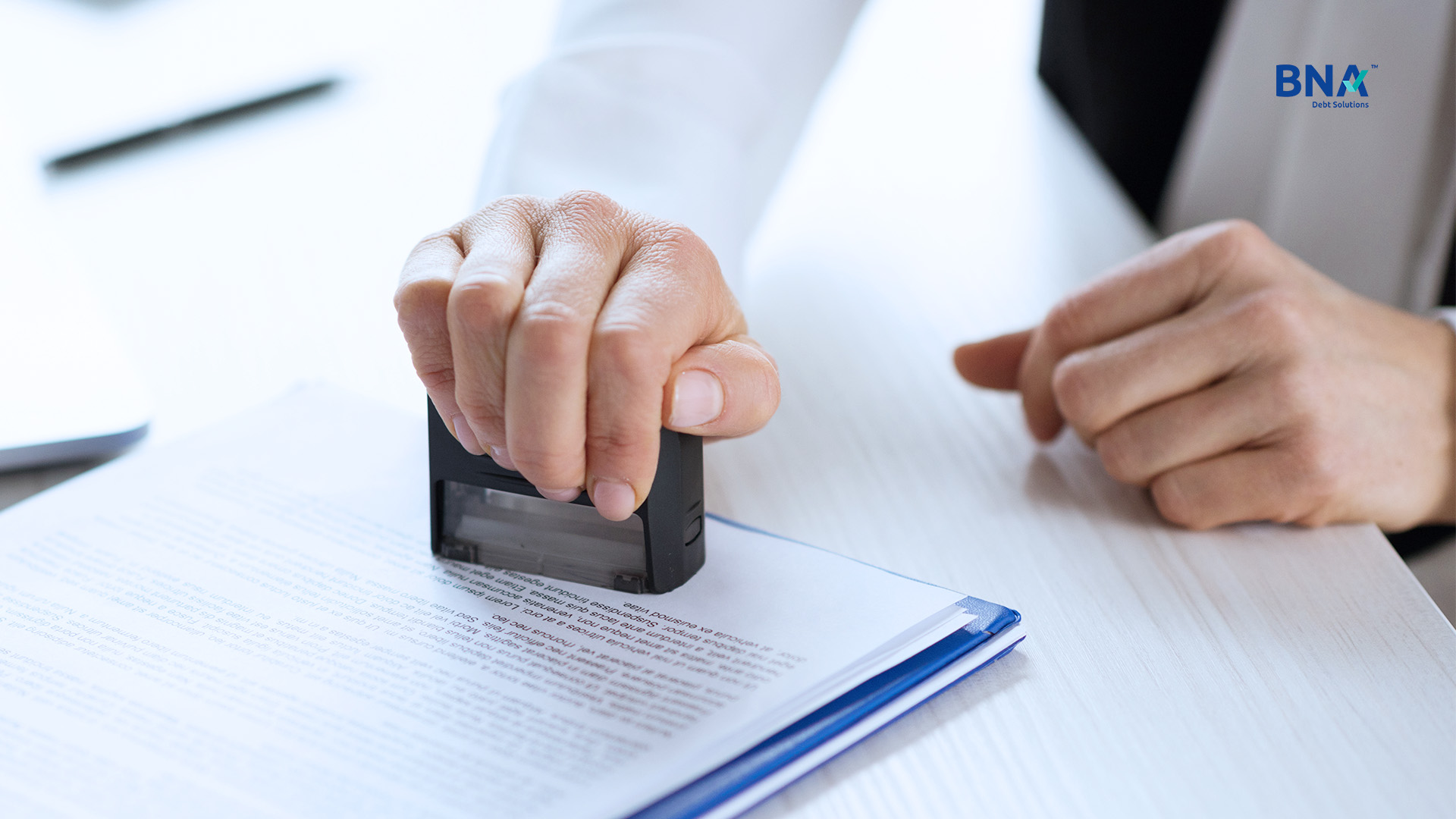Life after a consumer proposal can feel like a mix of relief and uncertainty. You’ve taken a bold step to tackle unmanageable debt. But now you’re staring at a bruised credit score, wondering if you’ll ever get your financial health back on track.
We get it. Thousands of Albertans have felt the same stress, shame, or frustration you’re feeling right now. However, here’s the good news: rebuilding your credit history is possible, and it begins with small, manageable steps.
At BNA Debt Solutions, we’ve seen thousands of people move forward after a proposal. While rebuilding credit happens after your file is closed, we’re proud to provide resources that can help you along the way. In this guide, you’ll learn how a consumer proposal affects your credit, simple steps to start repairing it today, and ways to stay motivated on this journey. You’re not alone, and your comeback begins now.
The Problem: How a Consumer Proposal Affects Your Credit
A consumer proposal is a legal agreement to repay a portion of your unsecured debts, such as credit card balances, over one to five years. It keeps your home and car safe and eases the stress of unmanageable debt without bankruptcy. It’s a step toward a fresh start, but it does impact your credit. Here’s what happens:
- Credit Report Note (R7 Rating): When you file a consumer proposal, it shows up on your credit report. The debts included get an R7 rating, meaning you’re settling them through an agreement. Credit ratings range from R1 (paying on time) to R9 (indicating bankruptcy or collections). An R7 is in the middle. It’s not perfect, but it tells creditors you’re on a debt management plan and taking control. It’s better than an R9 and shows you’re moving forward. With steady habits, you can improve this over time.
- Credit Score Drop: Your score might fall by 100 to 150 points. That can feel like a gut punch, especially if missed payments already hurt your score before filing. But this dip is temporary, and you can rebuild it with patience.
- Protecting Assets and Stopping Creditors: A consumer proposal safeguards your assets, including your car and home. It also stops creditors from calling, suing, or garnishing your wages for those debts. That relief can help you breathe easier.
How Long Does a Consumer Proposal Affect Your Credit Report?
You might worry how long this will follow you. The good news? It’s not forever, and paying off your proposal faster can shorten the timeline. Here’s the deal:
- Equifax: The proposal is removed 3 years after you pay off all debts or 6 years from when you filed, whichever comes first.
- TransUnion: It’s gone 3 years after you complete the proposal or 6 years from the default date (usually when you filed), whichever comes first.
For example, if you complete your proposal in two years, it could be off your report in five years from the filing date. Every payment gets you closer to a cleaner slate.
The Solution: Simple Steps to Rebuild Your Credit
The path to repairing your credit begins with small, manageable steps. It’s not about quick fixes or magical solutions, but about building responsible habits that show creditors you are trustworthy. Let’s break it down into steps you can start today. These come from our years of experience helping people like you, and they are practical, doable, and designed to fit into your life.
1. Check Your Credit Report
First things first: you need to know what’s on your credit report. Your credit report, managed by credit bureaus like Equifax and TransUnion, shows your payment history, credit accounts, and credit rating (like the R7 from your consumer proposal).
In Canada, two major agencies, TransUnion and Equifax, keep track of this for you. You can get a free copy of your report from both, and it’s worth doing at least once a year. Here’s how:
| Agency | Contact Info | Mailing Address | Free Report Link | Dispute Link |
| Equifax Canada | 1-800-465-7166 | P.O. Box 190, St. Jean Talon, Montreal, PQ, H1S 2Z2 | Equifax Website | Equifax Dispute |
| TransUnion Canada | 1-800-663-9980 | P.O. Box 338, LCD 1, Hamilton, ON L8L 7W2 | TransUnion Website | TransUnion Dispute |
Get free Equifax and TransUnion credit reports annually through their websites or services, such as Borrowell. Review them to spot errors, such as debts wrongly marked as R9 (personal bankruptcy) instead of R7 (debt management plan). Correcting these mistakes with your Certificate of Full Performance ensures that your credit history accurately reflects your progress.
Disputes are simple. Contact the credit reporting agencies with your consumer proposal documents to quickly resolve errors. You’re taking control with this first step, great job! Let’s keep going.
2. Start with a Secured Credit Card
Next, consider getting a secured credit card. We know that applying for more credit might seem intimidating right now. But listen: this is a tool to rebuild your credit, not to dig yourself into a deeper hole. Unlike a regular credit card, a secured card requires a deposit, like $300, which then becomes your credit limit. It’s like a safety net for the lender, lowering their risk while you work on building a positive payment history.
Use it for small purchases like gas or coffee, and pay it off each month to show the credit card company you’re dependable. Over time, these positive habits are reported to TransUnion and Equifax, gradually boosting your score.
Explore options from major banks or companies like Neo Financial. If you had a card with no balance when you filed your consumer proposal, you might still be able to use it to rebuild credit.
You’re showing you’ve got this, one smart purchase at a time. Next, let’s make those payments shine.
3. Pay On Time, Every Time
Missing payments can feel like a setback, but paying on time is your biggest win. It accounts for about 35% of your credit score. Every payment on your secured card or loan is reported to the credit bureaus, demonstrating your dependability.
Even making the minimum payment matters if that’s all you can do. Set reminders or auto-payments to stay on schedule. It’s a small habit that can lead to big results. You’re showing you can do this, one payment at a time.
4. Go Easy on Your Credit
High credit balances can weigh you down, but using less credit feels freeing. Credit utilization refers to the percentage of your credit limit that you’re using. Aim to keep it below 30%. For example, on a $300 card, that’s under $90. A simple budget helps you spend wisely and stay in control.
Remember, limit the card to one or two planned transactions. For example, the first grocery purchase of the month and cover other spending with debit or cash. This disciplined pattern keeps utilization below 30 percent and demonstrates prudent credit use.
Pay off purchases quickly to demonstrate to creditors that you’re managing your finances well. Set aside a small emergency fund, even $25 from each payday. So unexpected bills don’t send you back to your card. Paying cash in those moments keeps your balance low and helps your score climb.
5. Be Patient and Selective
Resist the urge to apply for multiple credit cards or loans, even if you’re eager to rebuild faster. Each application triggers a “hard inquiry,” which can ding your credit score and signal risk to lenders.
Be selective by focusing on one or two tools, such as your secured credit card or a credit builder loan (for example, a savings loan where payments help build credit and you get your money back). Putting your focus on one or two tools, instead of many, will help you use them more effectively and get the most benefit from each one.
Checking your credit report doesn’t harm your score. So, regularly monitor your Equifax or TransUnion report. Rebuilding after a consumer proposal or bankruptcy takes up to six years for the proposal to fully clear. But every smart choice gets you closer.
6. Set Small Goals to Stay Motivated
Keep your spirits high by setting small, achievable goals to celebrate your progress. Aim to boost your credit score by 20 points in six months. Pay off your secured card on time each month, or save enough for a small RRSP loan to build credit and earn a tax refund.
Each win, like catching a credit report error or making consumer proposal payments early, builds momentum. Celebrate these victories, because they’re proof you’re on the path to a good credit history.
Write down your goals, like qualifying for an auto loan or lowering interest rates in the future. These milestones make the consumer proposal process feel worth it and keep you focused and motivated on your debt relief journey.
A Few More Tips to Lift You Up
Want a little more help? Here are some bonus ideas to strengthen your recovery:
- Set a Budget: Track your income and expenses. Cut back where you can. This helps you avoid accumulating new debt and frees up cash for payments.
- Pay More When Possible: If you can swing more than the minimum, do it. It chips away at debt faster and looks great to creditors.
- Prepaid Cards Don’t Build Credit: Prepaid credit cards won’t help your score. They don’t report to credit agencies, so skip those and focus on secured cards instead.
- Steer Clear of Scams: Avoid credit repair scams promising quick fixes. Remember, real progress comes from patience and good financial habits.
- Understand Credit Counselling: Credit counselling services cannot negotiate with creditors to reduce debt. Only a Licensed Insolvency Trustee can do this through a consumer proposal.
Life After Completing Your Consumer Proposal
Finishing your consumer proposal is no small feat. That weight of debt you’ve been carrying? It’s finally lifting, and you deserve to pause and take it in. You’ve worked hard to get here, and this moment marks a real turning point. Let’s talk about what comes next, so you can step into this new chapter with confidence.
- Your Certificate of Full Performance: When you make that final payment, you’ll get a Certificate of Full Performance. It’s proof you’ve cleared the debts in your proposal. It’s like a deep breath after a long climb. Our Licensed Insolvency Trustees will finalize matters with creditors and provide you with a Final Statement that outlines all the details.
- Keep These Papers Safe: Hold onto your Notice of Consumer Proposal, Certificate of Full Performance, and Final Statement of Receipts and Disbursements. You may need these in the future if a creditor requests proof of completion, so it’s important to have them on hand. They’re your record of this victory, showing the start date, creditors, and payments made.
You’ve earned this fresh start. We’re proud of you, and you’re not alone as you continue to move forward.
Credit Report Update Timeline: What to Expect in the First 3–5 Months
You’ve made your last proposal payment; take a moment to breathe. Once you receive your Certificate of Full Performance, the Office of the Superintendent of Bankruptcy notifies Equifax and TransUnion. It typically takes three to five months for those bureaus to refresh your file with the completion date shown on your certificate.
What you can do:
- Mark your calendar. Three months after you get your Certificate of Full Performance, pull your free credit reports.
- Look for lingering late‑payment marks. If any accounts still list missed payments or show an R‑rating past your completion date, reach out to the bureaus.
- Send proof. Include a copy of your Certificate of Full Performance (and keep your Notice of Consumer Proposal plus Final Statement handy). Ask the bureaus to contact those creditors and correct the records.
We get calls every week from people who worry when old late‑payment notes won’t budge. A quick check‑in and a couple of documents usually clear things up and protect the progress you’ve worked so hard for.
Taking this simple step keeps your credit file clean, gives your score room to climb, and lets you focus on the next win in your financial comeback.
The Emotional Side: You’re Stronger Than You Think
Let’s take a moment. We understand this isn’t just about numbers. Debt and credit issues can hit hard, making you feel ashamed, stressed, or like you’ve failed somehow. But listen: you haven’t. Life throws curveballs like job losses, medical bills, and unexpected setbacks, and asking for help takes courage. Filing a consumer proposal? That’s not giving up; it’s taking control, so you can own and plan your future.
Be proud of yourself for facing this. Every step you take, even the smallest ones, to rebuild your credit is proof you’re not letting debt define you. You’re not alone in this, either. Thousands of Albertans have walked this road, and with our support, they’ve come out the other side. You will too.
Frequently Asked Questions About Consumer Proposals
How does a consumer proposal affect my credit history?
A consumer proposal marks debts as R7 on your credit report, showing you’re settling through an agreement. It may lower your score by 100-150 points, but timely payments can build a positive credit history. It stays on your report for up to six years, or three years after completion, whichever comes first.
Can I rebuild credit during a consumer proposal?
Yes! Using a secured credit card or credit builder loan helps create a positive payment history. Make monthly payments on time and keep credit use low. Check your credit report with agencies like Equifax or TransUnion to ensure accuracy and track progress.
What is the consumer proposal process?
The consumer proposal process involves working with a Licensed Insolvency Trustee who negotiates a plan to pay part of your unsecured debts. It protects assets like your home or car, stops creditor actions, and requires affordable monthly payments over one to five years.
Can I pay off a consumer proposal early?
Absolutely, but only if you have genuine surplus funds that won’t put your day‑to‑day budget at risk. Paying off the proposal sooner can shorten the time it stays on your credit report and showcase responsible money management. However, increasing payments isn’t always the best move if it jeopardizes your emergency fund or forces you into new debt.
If you’re considering larger or extra payments, reach out to us first. We’ll review your situation together and make sure speeding things up helps rather than sets you back.
How does a consumer proposal impact secured debts like a car loan?
A consumer proposal covers unsecured debts, not secured debts like a car loan or an existing mortgage. You must continue making mortgage payments or auto loan installments to keep those assets. Timely payments on these can also help rebuild your credit.
Why is an emergency fund important after a consumer proposal?
An emergency fund helps you avoid taking on new debt by covering unexpected expenses. Saving money, even small amounts, decreases dependence on credit cards. This promotes good financial habits and keeps your debt-to-income ratio low, which improves your credit outlook.
You’ve Got This and We’re Here for You
Repairing your credit after a consumer proposal is a journey, and we understand it can feel overwhelming. However, you’ve already overcome the most challenging part: completing your consumer proposal process. Now, it’s about taking it one step at a time. With consistent payments, smart tools like secured credit cards, and a little perseverance, you can rebuild your credit and work toward a debt-free plan that suits you.
At BNA Debt Solutions, we’re cheering you on. While we don’t provide direct credit repair services, we’re here with helpful resources and insights to support your financial future. You’re stronger than you think, and every step forward matters.




